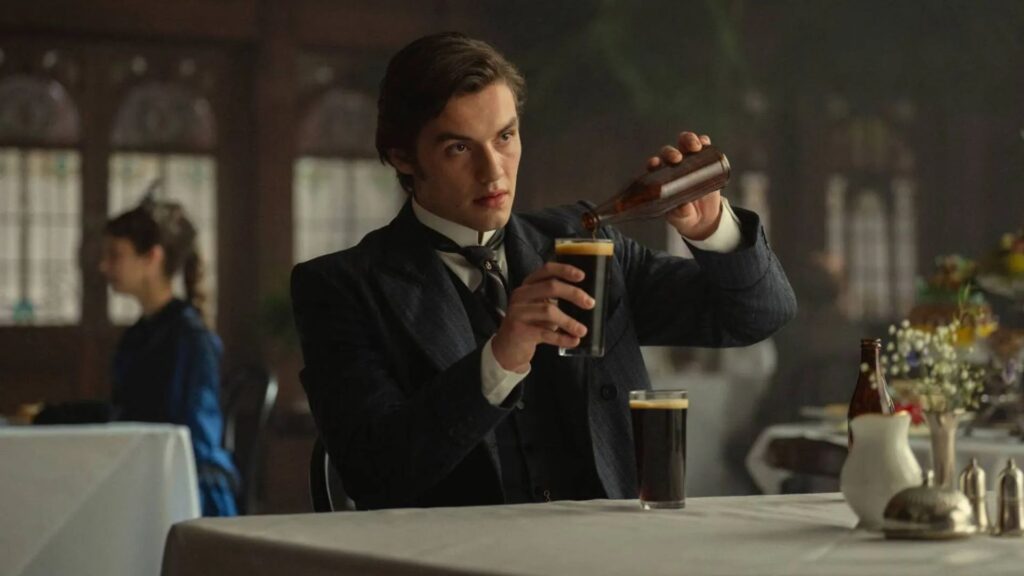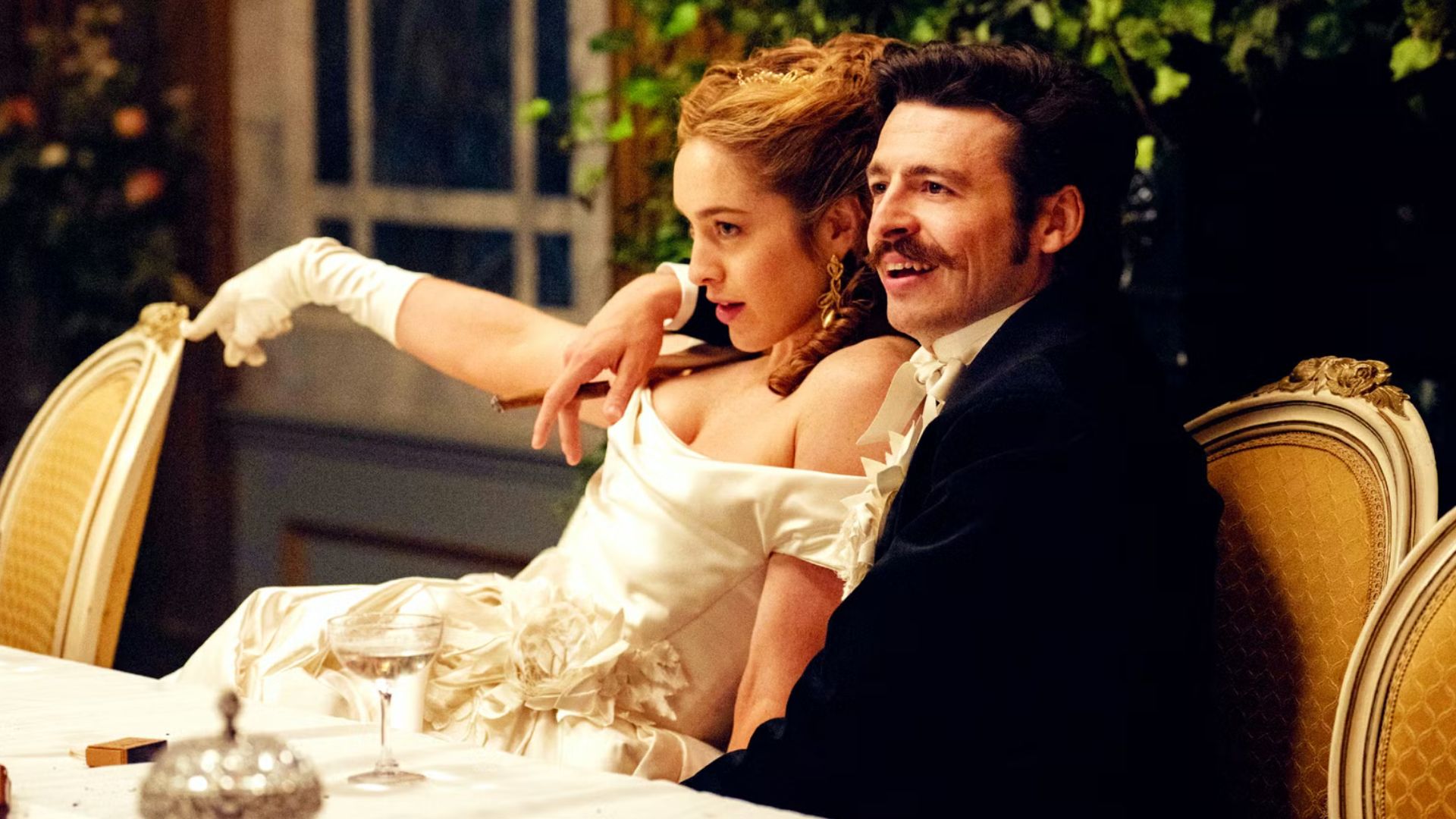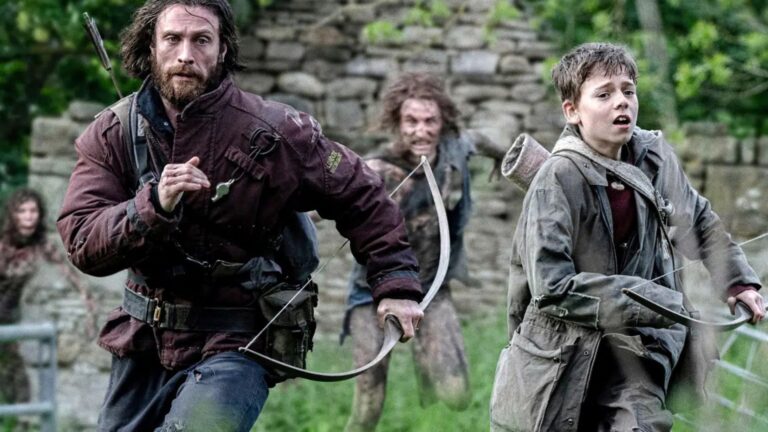Netflix unveiled its most ambitious period drama since “The Crown” today with the premiere of “House of Guinness,” an eight-episode series from acclaimed “Peaky Blinders” creator Steven Knight (Netflix). The historical drama, available for immediate binge-watching, positions itself as the streaming platform’s answer to HBO’s “Succession” with a distinctly Irish flavor, exploring the wealthy Guinness brewing dynasty in 1860s Dublin following patriarch Sir Benjamin Guinness’s death.
A Dynasty in Crisis

The series opens in 1868 as Sir Benjamin Guinness, the architect behind the extraordinary success of the Guinness brewery and former lord mayor of Dublin, has died, leaving his four adult children to battle over control of the family empire (Wikipedia). Critics have already drawn comparisons to Knight’s breakout hit “Peaky Blinders” and HBO’s acclaimed corporate saga, with early reviews describing it as “Succession with stout” (Variety).
The narrative follows siblings Arthur (Anthony Boyle), Edward (Louis Partridge), Anne (Emily Fairn), and Benjamin (Fionn O’Shea) as they navigate family power struggles while managing the world’s largest brewery (Netflix). Knight shared with Tudum that the brothers “were given joint stewardship of the brewery for very interesting reasons,” with their father deliberately chaining Arthur and Edward together in responsibility before his death (Harper’s Bazaar).
Star-Studded Ensemble Cast
The series features a compelling ensemble led by James Norton as Sean Rafferty, the brewery’s enigmatic foreman whose fate becomes entangled with the dynasty’s power struggles (BBC). Anthony Boyle portrays Arthur Guinness, the eldest brother educated at Eton who spent most of his twenties in London, while Louis Partridge plays his contrasting younger brother Edward (Radio Times). Emily Fairn and Fionn O’Shea round out the core family as siblings Anne and Benjamin.
Game of Thrones alumni Jack Gleeson returns to television as Byron Hughes, a distant cousin seeking his slice of the Guinness fortune, while veteran Irish actors including Dervla Kirwan and Michael McElhatton add gravitas to the ensemble cast (Screen Rant). Knight emphasized casting actors in their twenties to authentically portray the Guinness heirs, noting “it was important to get people of that generation to play the roles” (Radio Times).
Knight’s Signature Style and Family Approval
The production employs Knight’s trademark anachronistic music choices, featuring contemporary Irish artists like Fontaines D.C. and Kneecap over 19th-century visuals (Timeout). The soundtrack includes tracks such as “Starburster” by Fontaines D.C. and “Get Your Brits Out” by Kneecap, alongside Irish folk anthems by The Mary Wallopers (Soap Central).
Notably, the series was conceived by Guinness descendant Ivana Lowell, great-great-great granddaughter of Sir Benjamin, ensuring family approval of the dramatization (Radio Times). Lowell was inspired to pursue the project after watching “Downton Abbey” and feeling that “our family history was a lot juicier and more interesting than this – plus it was all true” (RTE).
Production and Filming Locations
Filming took place primarily in Liverpool and Manchester, doubling for period Dublin and New York (Timeout). Liverpool’s Stanley Dock served as the iconic Guinness brewery, with production designer Richard Bullock noting it was “the only place that could come close” to replicating the brewery (Grazia Daily). St George’s Hall was used for the Fenians protest in Dublin’s College Green, while Manchester’s Northern Quarter stood in for New York scenes.
Additional locations included Broughton Hall Estate in North Yorkshire for Arthur Guinness’s country retreat and Penrhyn Castle in Wales for the family’s country home (Grazia Daily). Knight acknowledged the “responsibility” of depicting real people, telling the BBC: “You have to just write it and get the characters right” (BBC).
Mixed Critical Reception
Early reviews have been decidedly mixed, with critics praising the series’ visual splendor and Knight’s signature style while noting it lacks the sharp edge of his previous work (Variety). Variety called it “a solid family drama” but observed it “does not deliver the same electrifying intensity as Knight’s previous hit,” while Screen Rant described it as “a stylish, juicy drama that’s a mix of Peaky Blinders & Succession” (Screen Rant).
Empire magazine gave the show three stars, noting that while it features “Knight hallmarks” including “repeated slow-mo shots of an imposing figure strutting through a blazing industrial hellscape” and “a brazenly anachronistic soundtrack,” the series “has yet to really hit its stride” (Empire). The Financial Times similarly awarded three stars, suggesting the series “requires a bit of patience” and “does eventually settle into something a little more smooth and robust” (Latestly).
Historical Context and Future Outlook
The series explores the intersection of family drama with Ireland’s struggle for independence, set against the backdrop of Dublin’s rapid expansion and the rise of Irish Republicanism (Harper’s Bazaar). Knight has described it as having “Peaky Blinders swagger,” hoping audiences connect with “the grit and the warmth” of these real-life figures whose “story continues to this day” (BBC).
With all eight episodes now available for streaming on Netflix, “House of Guinness” represents Knight’s most ambitious return to television since “Peaky Blinders” concluded (Radio Times). The series’ hyperbolic cliffhanger ending makes clear this is very much to be continued, positioning the show as Netflix’s next potential franchise in the prestige period drama space (Empire).













